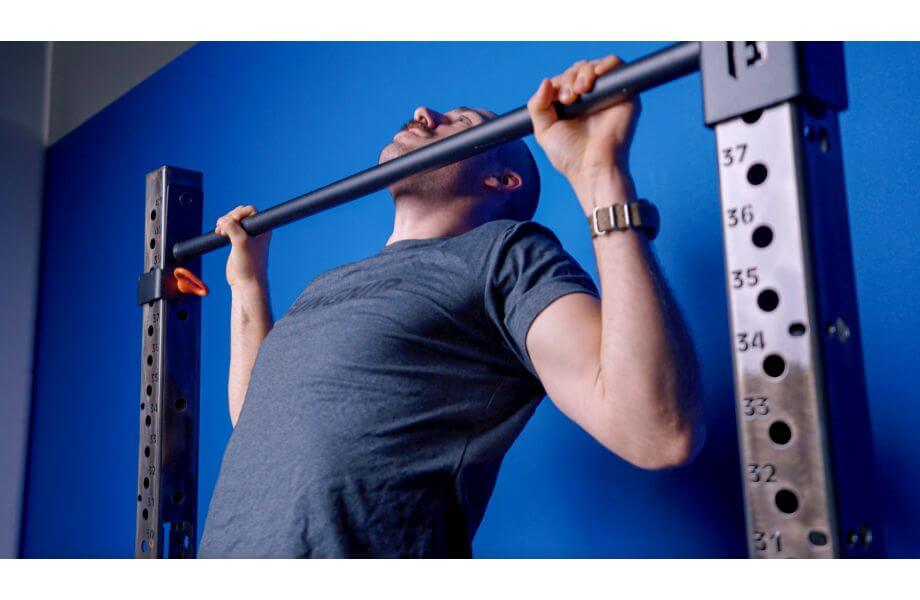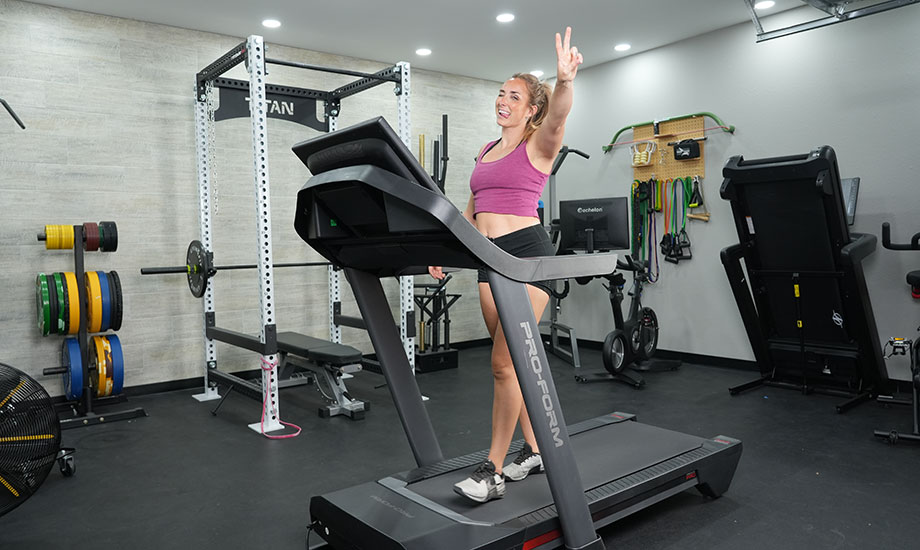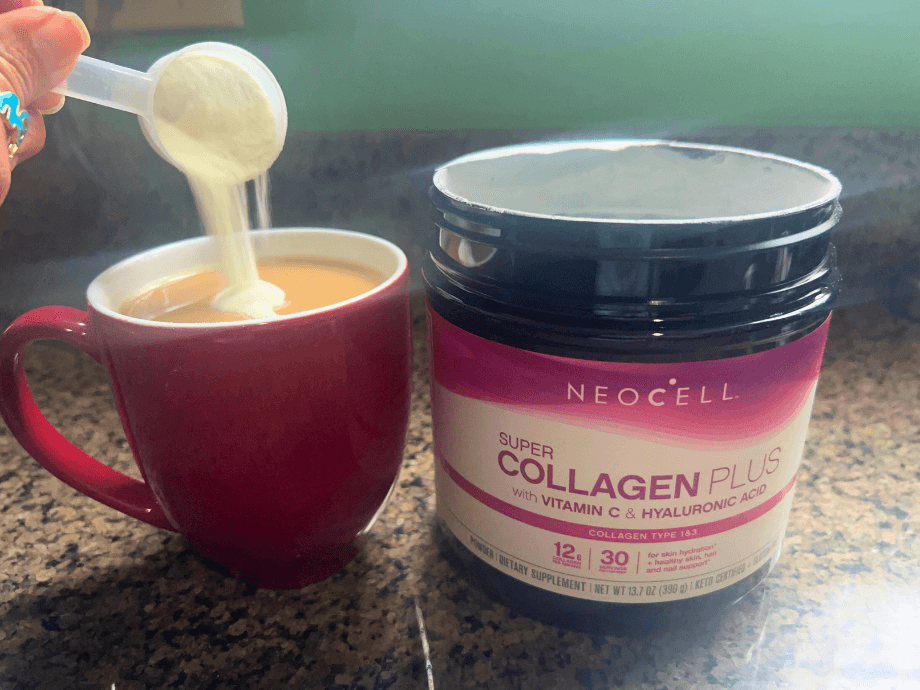Hitting your first pull-up is a significant fitness milestone for lots of people, representing an important achievement in your quest for upper body strength. It’s a hard exercise to do, but worth mastering for the muscle- and strength-building benefits.
If you’ve ever tried to do a full pull-up and found yourself stuck at the bottom, or something just didn’t feel right, don’t worry—I’ve got you covered. In this guide, I’ll break down the proper pull-up form, share common mistakes, and explain my best pull-up tips as a strength coach with six years of experience. It’s time to master the perfect pull-up, one of the best bodyweight back exercises you can do.
How to Do a Pull-Up
Muscles worked: Latissimus dorsi, biceps, rhomboids, traps, posterior deltoids.
- Start by taking an overhand grip (palms facing away from you) on the bar with your hands slightly wider than shoulder-width apart. (You can choose a grip that feels comfortable based on the type of pull-up bar, and your individual preferences.)
- Fully extend your arms and lift your feet off the floor so you’re in a dead hang. Pull your shoulder blades together and pull your body up. Think about pulling your elbows toward the floor. Ideally, you want your chest to touch the bar (though it’s ok if it doesn’t physically touch the bar).
- Slowly lower yourself to the starting position again, maintaining control throughout the movement.
Expert tip: When starting your pull-up from the dead hang position, my favorite coaching cue is to imagine you’re trying to tuck your elbows into your back pocket.
RELATED: What Muscles Do Pull-Up
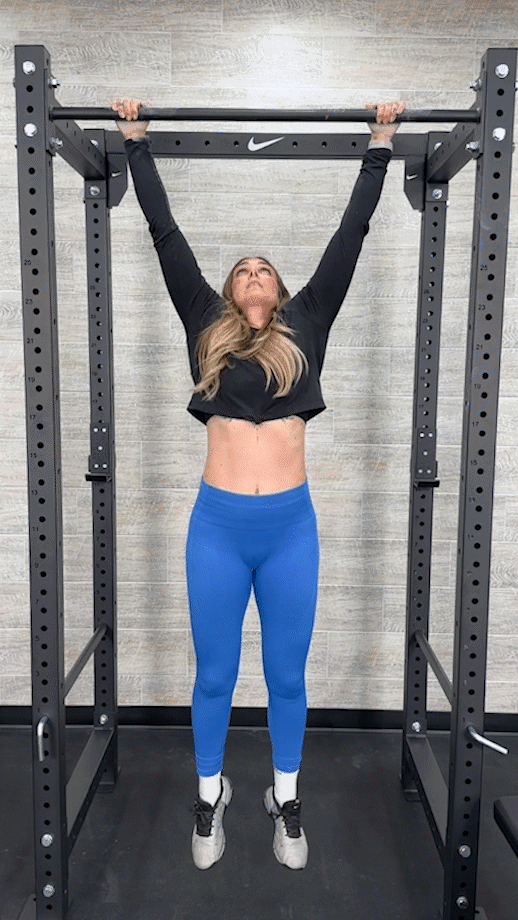
Form Tips From a Strength Coach
Pull-ups may look simple, but there are a few minor details you should pay attention to. As with all strength training exercises, the best way to see results is to use the correct form, so let’s look at the most essential points.
Pull Your Elbows Behind You, Not in Front Of You
As you pull your body up toward the bar, your elbows should end up behind you, not in front of you. This helps you engage your back muscles, or latissimus dorsi, which is difficult if your elbows are in front of you.
Avoid Using Momentum
Unless you’re specifically doing kipping pull-ups for CrossFit, or muscle ups, avoid using momentum. Swinging your body may help you achieve a rep, but you’ll fail to engage your back muscles and, in extreme cases, may hurt yourself.
RELATED: CrossFit Exercises
Think about pulling yourself up to the bar explosively, and then take about two seconds to lower yourself back to a dead hang position. I think it’s better to do five perfect pull-ups than 10 reps using momentum or a partial range of motion. Find your repetition baseline using ideal form and build your rep count from there. Your ego may take a hit in the short term, but long term the payoff will be a lower risk of injury, more muscle, and an increase in strength.
Brace Your Full Body
Before you do a pull-up, pretend like someone is going to punch you in the stomach and flex your abs. This cue will stabilize the rest of your body to help you avoid unnecessary movement, letting you target your back muscles more effectively. Tensing your butt during each rep is also a good cue to minimize unwanted swinging during pull-ups.
Keep Your Head and Shoulders Back
I asked GGR Senior Writer Lauren Strong, a certified personal trainer (CPT), what she thinks is the most common pull-up form mistake. She answered that many people overcompensate to get their chin over the bar by jutting out their necks or rounding their shoulders at the top. Lauren’s advice?
“I’d rather see someone be able to keep their chest open, shoulders down, and lat muscles engaged and only complete 75% range of motion versus completely cave at the top. This is harder said than done, though. That’s why pull-ups need progressions, so you can practice good form with less of your body weight. Once you’ve done some basic progressions, negative pull-ups are an excellent way to practice one or two reps with your lats fully engaged and shoulders down away from your ears,” she says.
RELATED: Guide to Eccentric Training
Benefits of Pull-Ups
If you’re not convinced that pull-us are worth the effort to learn, and eventually master, here are a few of the most important benefits.
Strengthens the Back and Arms
A pull-up is a compound exercise, which means it trains multiple muscle groups at the same time. With the pull-up, while many muscles play a role, the main muscles you’ll be using are your back and arms, which are important muscles to train for nearly any sort of fitness goal.
Improves Grip Strength
Since you’re holding your body weight with nothing but your hands, pull-ups force your grip to become stronger over time. This can benefit any other type of activity that requires a strong grip, like deadlifts, rowing, rope climbing, and more. Research has also demonstrated1 a relationship between grip strength and longevity, showing that increased grip strength is associated with a reduced risk of all-cause mortality.
Improves Shoulder and Back Mobility
One great way to improve your mobility is training with resistance through a full range of motion. With a pull-up, your arms are fully extended over your head at the bottom, creating a large stretch through your back and shoulders. I’ve tried plenty of mobility exercises with myself and my clients during my years as a personal trainer and found that most people love the stretch at the bottom of a pull-up. If your back and shoulders have been feeling stiff from too much desk work, adding pull-ups to your routine can be a great way to loosen things up.
Pull-Up Variations
The pull-up is a classic bodyweight exercise that can be used for nearly any training goal, but that doesn’t mean you have to stick with traditional pull-ups.
Here are a few variations to spice up your routine.
Weighted Pull-Ups
If you’ve mastered pull-ups and are starting to find them a bit too easy, you’ll want to increase the challenge. One of the easiest ways to do this is through weighted pull-ups, which use an external weight to add resistance, making your body feel heavier.
One way to do this is by using a belt to attach weights. If you don’t have a weight belt, you can also hold a dumbbell between your feet, though you may need someone to help you position the dumbbell.
The easiest way to add weight is to wear one of the best weighted vests, which anchors the weight to your body, so you don’t feel any weight swinging around.
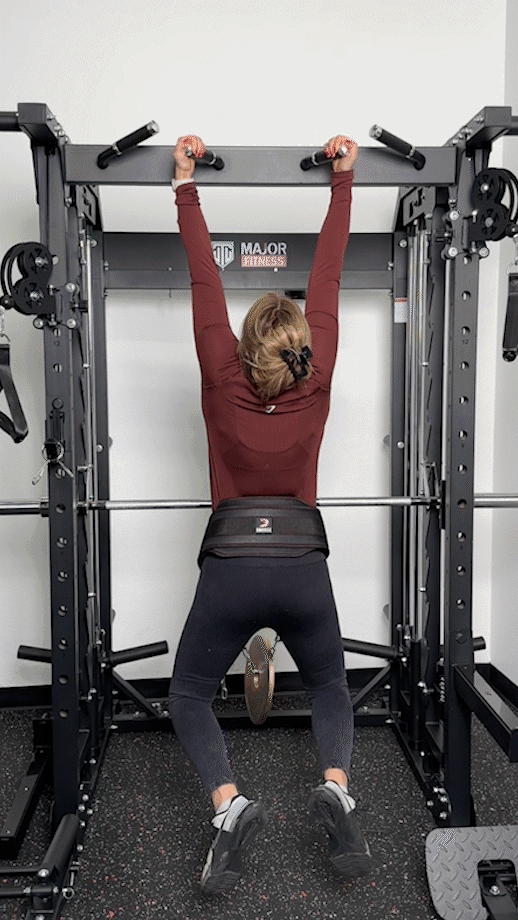
Towel Pull-Ups
Another way to increase the challenge is to create an unstable grip using a towel. With towel pull-ups, you may sway a bit more, and you’ll have to squeeze the towels pretty hard, challenging your grip strength.
You may also be unable to use as much weight, but you’ll certainly strengthen your hands and forearms, and research has shown2 that towel pull-ups significantly increase muscle activation in the lower traps.
All you need to do is drape a workout towel over a pull-up bar, hold it with a neutral grip, and pull your chest toward the bar. Your elbows will end up in front of you rather than behind you, but that’s okay in this situation.
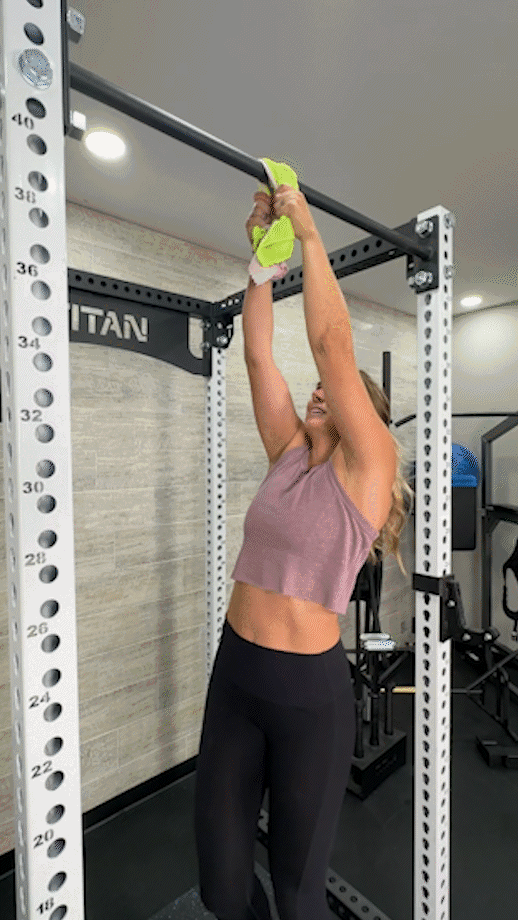
Banded Pull-Ups
Using a resistance band to help you with your pull-ups can make them feel easier, allowing you to perform more repetitions. While banded pull-ups are useful for beginners to build strength, they can also help you get more reps per set.
Banded pull-ups are a great option if you’re strong enough to do a single pull-up but hit failure trying to do more than two to three in a row. You’ll loop a thick resistance band over the bar, place your feet in it, and perform pull-ups as usual.
RELATED: Best Resistance Bands

Common Pull-Up Grips
Another great way to build some variety into your training plan is to alternate between various pull-up grips, which can emphasize different muscle groups.
- Overhand: The standard pull-up grip, overhand pull-ups can train the lats, biceps, and rear delts. They’re often a bit more challenging than neutral-grip and underhand grip pull-ups, but a great option to build muscle in the back.
- Underhand: Underhand pull-ups are performed with your palms facing toward you, about shoulder-width apart, commonly called chin-ups. While the movement is similar, underhand grip pull-ups provide significantly more stimulus to your biceps, and many find them easier since you can involve your arms so much.
- Neutral: Neutral-grip pull-ups are performed with your palms facing each other and are a hybrid between chin-ups and pull-ups. They work the muscles in your arms, shoulders, and back, and are often a very comfortable choice for those with cranky shoulders.
- Extra-wide: Extra-wide grip pull-ups are one of the most challenging variations, as the wider grip creates more lat activation3, with minimal assistance from other muscles. If you’re going to try this grip, make sure you have healthy, mobile shoulders, as the wide angle often causes shoulder discomfort for those with tight shoulders.
RELATED: Chin-up vs. Pull-up
Pull-Up Alternatives
If pull-ups aren’t your jam, or you’re still working on building enough strength to perform proper pull-ups, there are plenty of alternate exercises you can use in the meantime. Here are a few of the best ones to choose from.
Lat Pulldowns
While not technically a pull-up, a lat pulldown uses the same upper body muscles but removes your lower body from the equation, similar to a pull-up machine. You can practice pulling your elbows back to increase upper body activation and focus on proper form without worrying about what your lower body is doing.
If you’re training in a home gym, sit on the floor, take an overhand grip on the bar, and pull your elbows back and down, just like a pull-up.
If you’re training in a commercial gym, you may be using a lat pulldown machine—which has a seat and pads to hold your legs in place—but the upper body pulling movement is still the same.
RELATED: Lat Pulldown vs Pull-Up
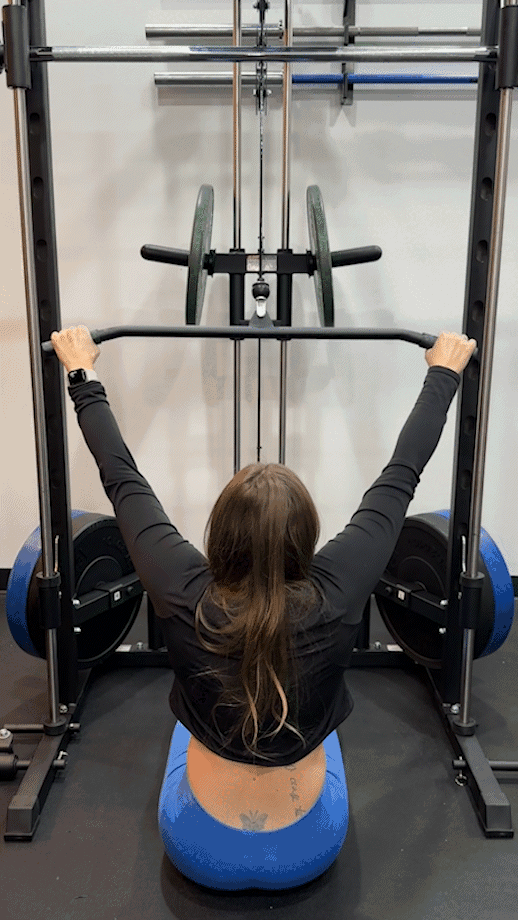
Inverted Row
An inverted row is a great way to train your upper back muscles using your body weight, but it’s a bit easier than pull-ups.
To start, use a power rack or Smith machine to set a barbell at about waist height. Lay underneath the barbell, taking a comfortable overhand grip about shoulder width or wider, with your legs straight out in front of you. Keep your core braced, squeeze your glutes to make sure your hips aren’t falling toward the ground, and pull your chest up to the bar, initiating the movement by pulling your elbows back.
You can adjust the height of the bar and the positioning of your feet to change the difficulty. The higher the bar, and the closer your feet are to your body, the easier the movement will be, while straightening your legs and lowering the bar will increase the difficulty.
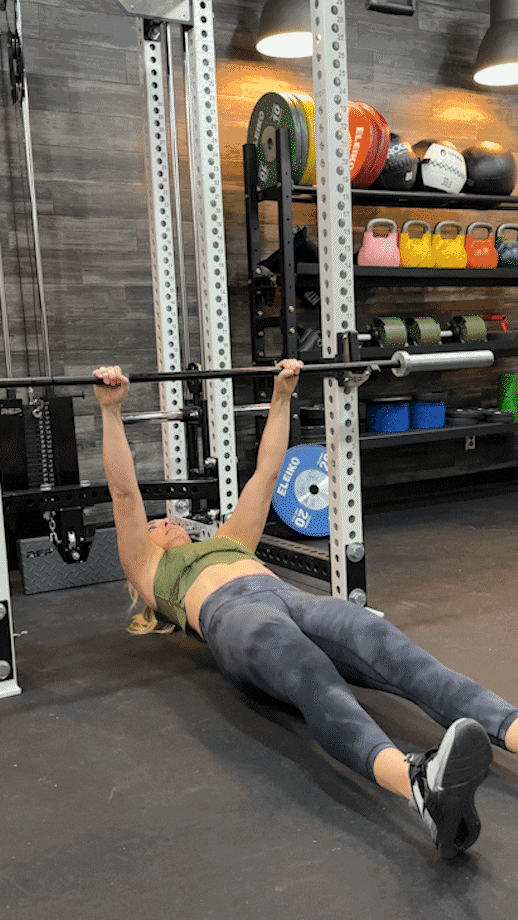
How to Do a Pull-Up: FAQs
What is the benefit of pull-ups?
Pull-ups are a fantastic strength-building exercise that will build strength in multiple muscle groups in your body. The primary muscles are going to be the muscles in your back and arms or your lats and biceps, but you’ll also be using your rhomboids, delts, core muscles, and more.
Why are pull-ups so difficult?
Pull-ups are difficult because you’re using your entire body weight, and you’re pulling yourself up from a dead hang, so there is no momentum to help you. Not to mention, your grip strength can be a limiting factor, which isn’t the case for many other bodyweight exercises, so many find pull-ups difficult until they spend time practicing them.
Are pull-ups easier for skinny guys?
Pull-ups are difficult for everyone, but those with lower body fat levels may find them easier. Your body weight is the main resistance in pull-ups, so the less weight you carry, the easier pull-ups will be.
Why can I do pushups but not pullups?
Push-ups are another fantastic upper-body exercise that uses your own body weight, but the main difference is that you aren’t using your entire body with push-ups. With a pushup, your feet are still on the ground, so you’re not supporting your entire weight with your arms. With pull-ups, your entire body provides resistance.
RELATED: What Muscles Do Push-Ups Work?
References
- García-Hermoso A, Cavero-Redondo I, Ramírez-Vélez R, et al. Muscular Strength as a Predictor of All-Cause Mortality in an Apparently Healthy Population: A Systematic Review and Meta-Analysis of Data From Approximately 2 Million Men and Women. Arch Phys Med Rehabil. 2018;99(10):2100-2113.e5. doi:10.1016/j.apmr.2018.01.008
- Snarr RL, Hallmark AV, Casey JC, Esco MR. Electromyographical Comparison of a Traditional, Suspension Device, and Towel Pull-Up. J Hum Kinet. 2017;58:5-13. Published 2017 Aug 1. doi:10.1515/hukin-2017-0068
- Urbanczyk CA, Prinold JAI, Reilly P, Bull AMJ. Avoiding high-risk rotator cuff loading: Muscle force during three pull-up techniques. Scand J Med Sci Sports. 2020;30(11):2205-2214. doi:10.1111/sms.13780


